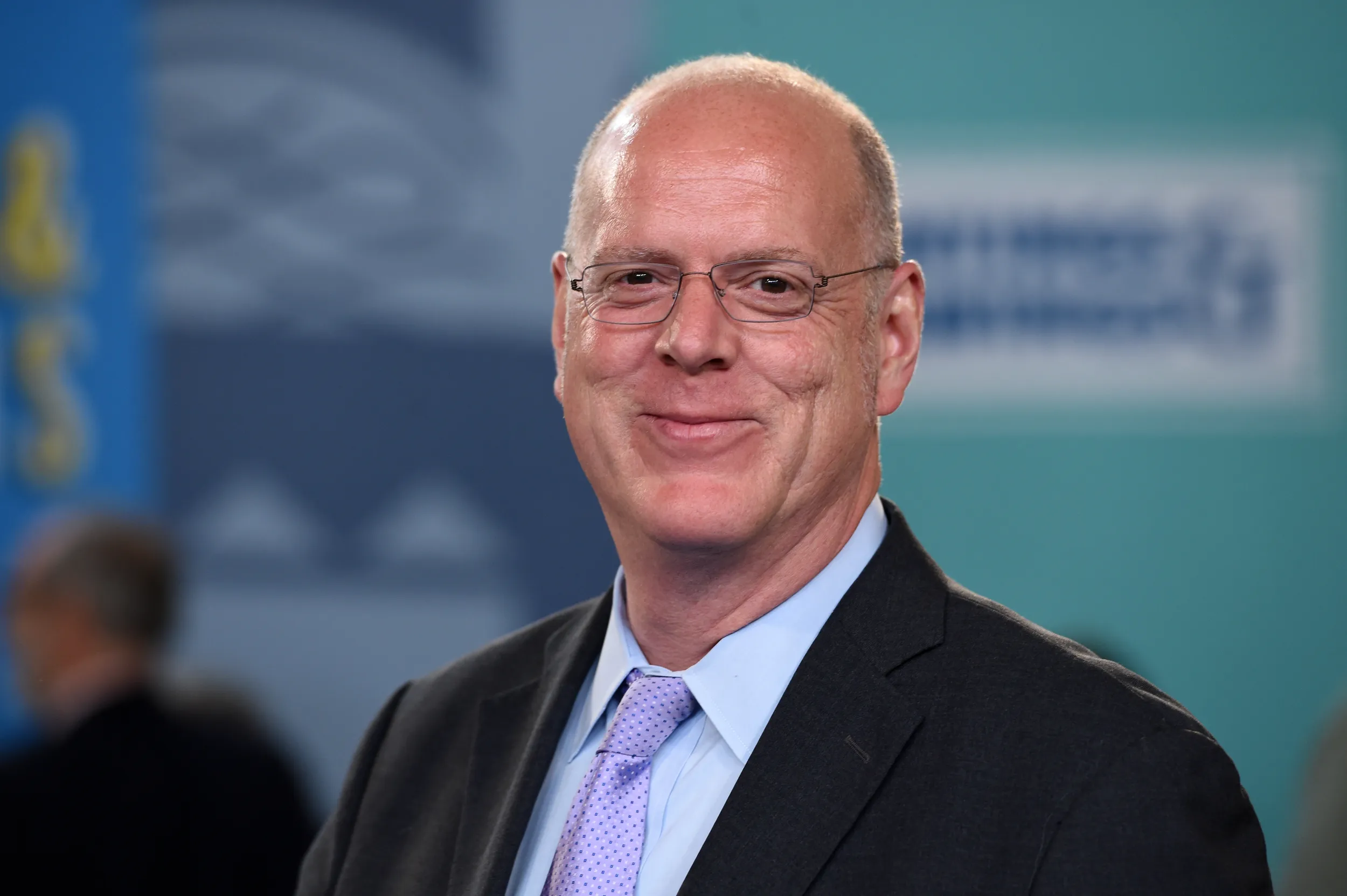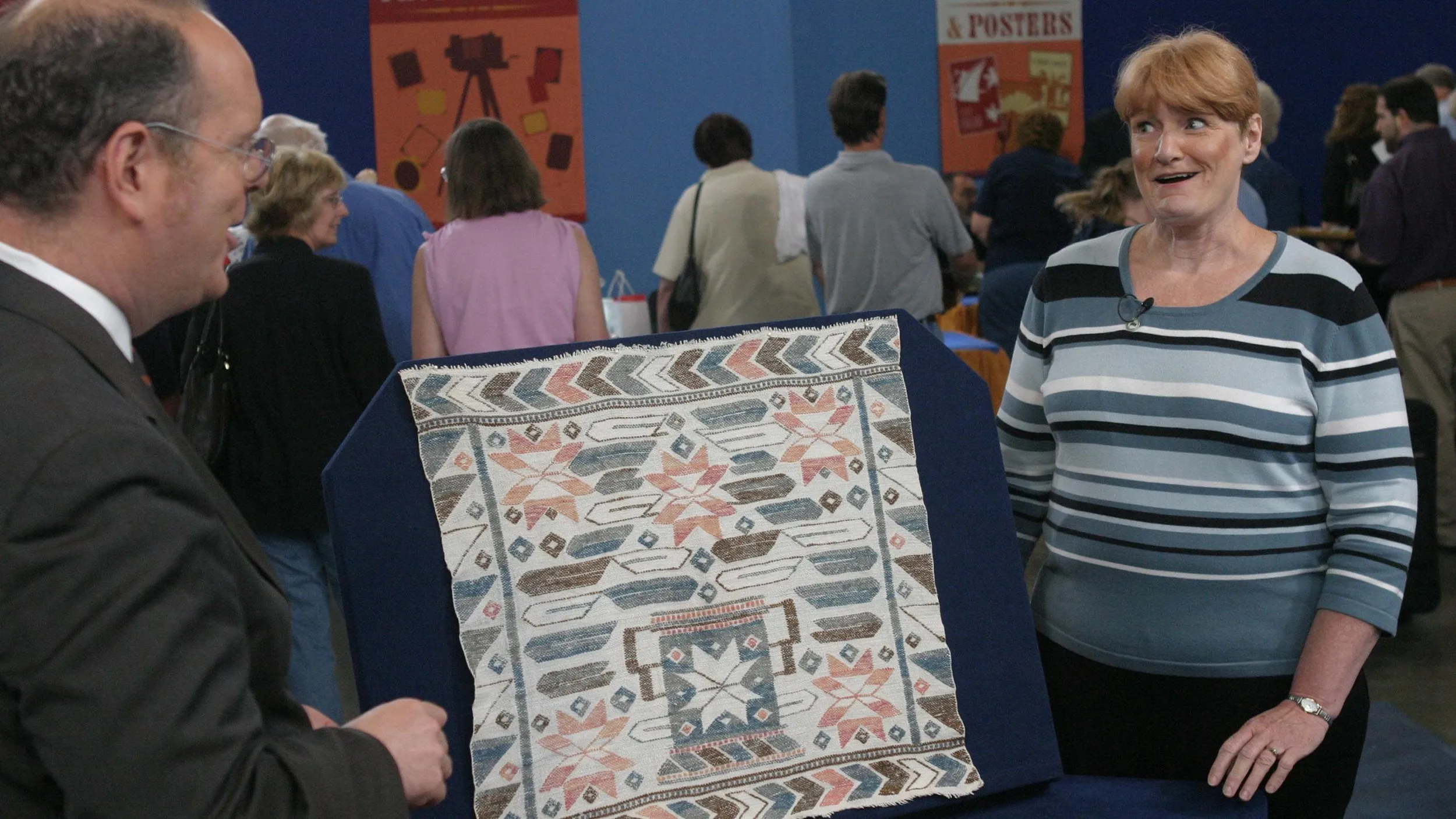GUEST: It's a piece I found at a thrift store in Minnesota. One of the things I always go for are linens, needlework of any kind, because it interests me, and I like just to study it and appreciate it. I have a lot of appreciation for women who have done needlework, and this kind of stuck out at me.
APPRAISER: When I first saw this, I was thinking, "Well, we're in Minnesota. Of course I'm going to see a lot of kind of 20th-century Scandinavian-inspired textiles."
GUEST: Certainly.
APPRAISER: Which generally in the market today are of very little interest, because they're things that were either made in this country or were commercially made in Scandinavia. And then as I looked more closely, I realized, but wait, this isn't just another one. There is something more going on. There's an incredible subtlety to the coloration and the way this is woven and put together. We've got shading of different colors of roses, to fuchsia, and then blue-greens to blue. And there's an artistry in this that you wouldn't just see in a common piece. So I was thinking, "Gosh, you know, this really is better than most," and got intrigued myself. And then, I recognized that in the corner, it was signed, which, most commercial pieces aren't signed. And this is signed with the initials "MMF," which stands for a woman named Märta Måås-Fjetterström, who was probably the leading textile designer and producer in Sweden in the early 20th century.
GUEST: Oh, no!
APPRAISER: She started out as a painter, started a workshop by 1918, 1919, producing textiles, curtain fabrics-- all handmade-- also rugs and carpet. I mean, she was of such prominence, that she designed and manufactured the rugs that are used for the Nobel Prize ceremonies in Stockholm, so she's really a designer of some note. Typically in the market, we come across pieces of hers that are quite large. I've never seen a handwoven, flat-weave textile of this size coming from her. And the quality backs up with the initials. Do you have any idea of what this may be worth?
GUEST: Absolutely not-- I knew it was worth the dollar that I paid for it, just to have something to, you know, to study, because it was so interesting.
APPRAISER: Right, because I would say, with the popularity of Märta Måås-Fjetterström things on the market today, because it's really coming on quite strong, I would place a retail value on a piece like this today of somewhere between $2,000 and $4,000.
GUEST: (inhales, groans)
APPRAISER: Certainly worth a dollar investment.
GUEST: Oh, my goodness!











